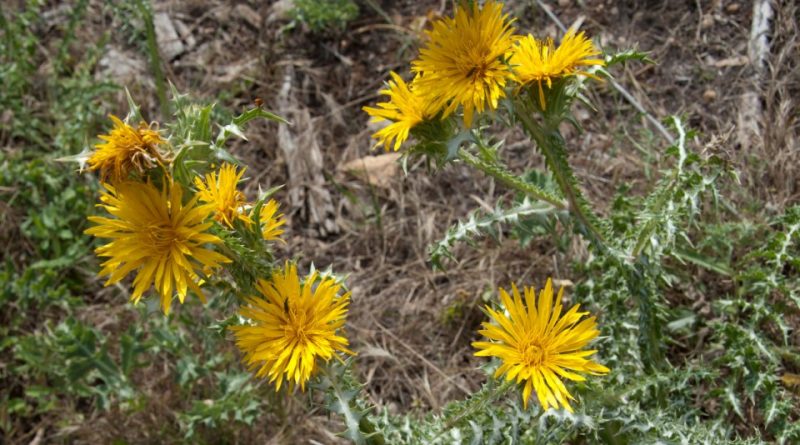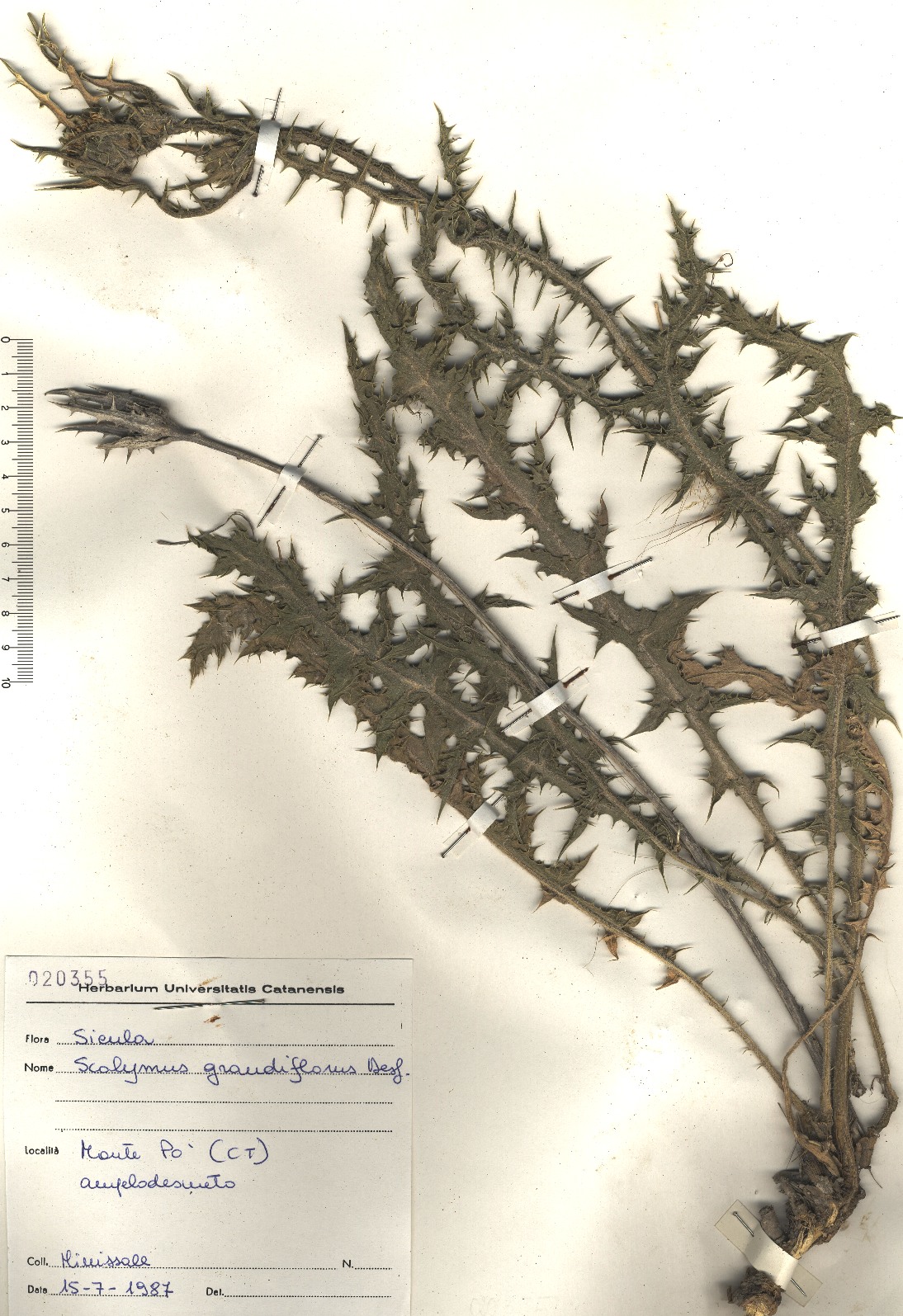Scolymus grandiflorus
Scolymus grandiflorus
The major cardoon or yellow thistle (Scolymus grandiflorus Desf., 1799) is a herbaceous species belonging to the Asteraceae family.
Systematic –
From a systematic point of view, it belongs to the Eukaryota Domain, the Plantae Kingdom, the Spermatophyta Superdivision, the Magnoliophyta Division, the Magnoliopsida Class, the Asteridae Subclass, the Asterales Order, the Asteraceae Family, the Cichorioideae Subfamily, the Cichorieae Tribe, the Scolyminae Subtribe and therefore to the Genus Scolymifus edus .
The term Scolymus hispanicus subsp is synonymous. Grandiflorus.
Etymology –
The term Scolymus comes from scolymus cardone, artichoke, name present in Pliny (Latinization of the Greek σκόλυμος scólymos, a sort of edible thistle in Aristarchus and Theophrastus).
The specific epithet grandiflorus is in reference to the size of the flowers.
Geographical Distribution and Habitat –
The greater cardogna is a plant of Mediterranean origin and widespread in southern Europe and North Africa.
In Europe it is a widespread species in France (including Corsica), in Italy, especially in southern Italy, Sicily and Sardinia; in the countries of North Africa it is present in Morocco, Algeria, Tunisia and Libya. The presence in Spain, Turkey and Lebanon is uncertain.
Its habitat is that of uncultivated grasslands, roadsides and ruins where it grows from sea level up to 1400 m above sea level.
Description –
Scolymus grandiflorus is a perennial hemicryptophyte scapose, with spiny stem, poorly branched, which grows at heights between 20 and over 100 cm.
The leaves are also thorny and up to 10-15 cm long.
The inflorescence is composed of ligulate flowers of variable color from bright yellow to orange, hermaphrodite, wrapped by 3 bracts (with 6 in the terminal head) sharpened and gathered in a head of 5-6 cm in diameter.
The antesis is between May and September.
The fruits are ovoid achenes, with persistent pappus formed by 3-7 central bristles.
In the summer, the plant undergoes drying.
Cultivation –
The greater cardogna is a spontaneous species that grows mainly in the areas of the Mediterranean with mild climate and not cold winters and in the presence of tendentially limestone and arid soils and which is found in open or marginal areas near uncultivated grassy areas, road edges and ruins with preference for coastal areas, and can be found mainly on sandy soils.
Uses and Traditions –
The cardogna maggiore is a plant used in the traditional gastronomy of some European and Italian regions. The most tender basal tufts, cleaned of thorns and the hardest external parts, are boiled and seasoned with oil and lemon, used in omelettes or savory pies, fried in batter or added to salads.
In the Murge, they are used for ritual dishes for the Easter holidays, often as a side dish for meat or lamb broth. In the Ancona area, the use of roots to accompany Christmas stockfish dishes is reported.
Scolymus grandiflorus is a plant with nutraceutical properties and stimulating hepato.
The parts used are leaves, roots and stem and the balsamic period is that of early spring.
Preparation method –
The greater cardogna is used in the kitchen, where the fleshy root is used boiled or stewed as a side dish in meat and fish dishes. The tender stems deprived of the thorns after peeling are boiled in the same way as the artichoke stems. They can be seasoned with oil and lemon used in omelettes or savory pies, or fried in batter or added to salads.
Guido Bissanti
Sources
– Acta Plantarum – Flora of the Italian Regions.
– Wikipedia, the free encyclopedia.
– Treben M., 2000. Health from the Lord’s Pharmacy, Tips and experiences with medicinal herbs, Ennsthaler Editore
– Pignatti S., 1982. Flora of Italy, Edagricole, Bologna.
– Conti F., Abbate G., Alessandrini A., Blasi C. (edited by), 2005. An annotated checklist of the Italian vascular flora, Palombi Editore.
Warning: Pharmaceutical applications and alimurgical uses are indicated for information purposes only, they do not in any way represent a medical prescription; therefore, no responsibility is accepted for their use for healing, aesthetic or food purposes.


